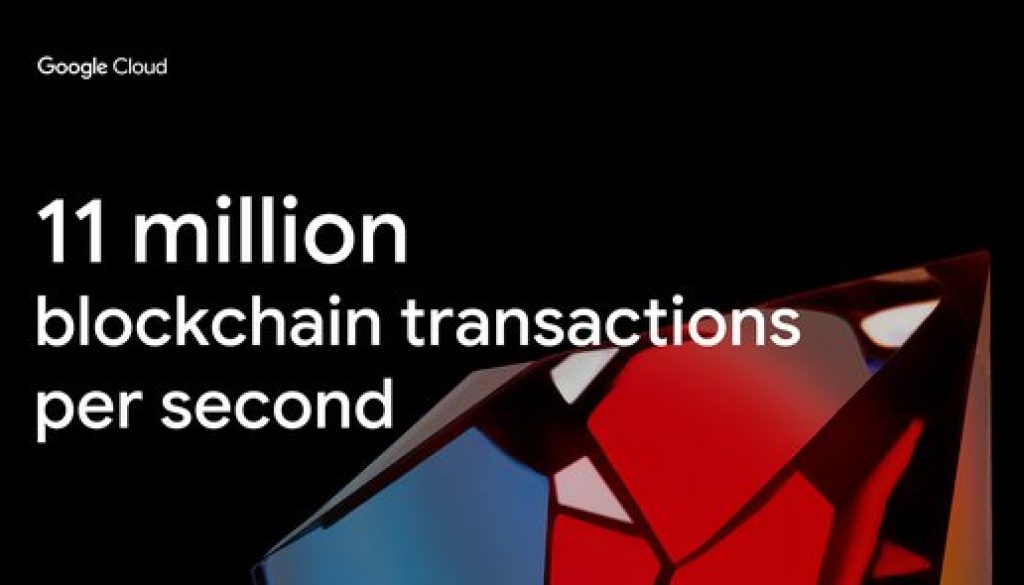GCP – How Keeta processes 11 million financial transactions per second with Spanner
Keeta Network is a layer‑1 blockchain that unifies transactions across different blockchains and payment systems, eliminating the need for costly intermediaries, reducing fees, and enabling near‑instant settlements. By facilitating cross‑chain transactions and interoperability with existing payment systems, Keeta bridges the gap between cryptocurrencies and fiat, enabling a secure, efficient, and compliant global financial ecosystem.
Founded in 2022 and backed by Eric Schmidt, the former CEO of Google, Keeta has engineered its network to meet the stringent regulatory and operational requirements of financial institutions. Its on‑chain compliance protocols, including Know Your Customer (KYC) and Anti-Money Laundering (AML), ensure security and regulatory adherence. Keeta’s architecture also natively supports asset tokenization and digital identity, making it an ideal platform for stablecoins and real‑world asset transfers.
Recently, the company conducted a public, verified stress test of its network, which runs on Spanner, Google Cloud’s horizontally scalable, highly available operational database. The test demonstrated Keeta Network is capable of over 11 million transactions per second (TPS), significantly outperforming traditional layer-1 blockchains and opening new opportunities for what is possible with blockchain technology.
Keeta chose Spanner to power its distributed ledger due to its availability and elastic scalability, allowing the team to scale up or down as needed without downtime, costly over-provisioning, or risky manual administration. Google Cloud was also instrumental in helping to prepare and execute Keeta’s stress test, providing world-class infrastructure and technical guidance that helped validate the network’s real-world performance.
With Spanner’s fully managed operations and familiar relational developer experience, Keeta was able to focus on its network — not database infrastructure or distributed systems. At peak, Spanner handled 300,000 queries per second, reading and writing durable state to read balances, check permissions, resolve conflicts, and publish votes.
- aside_block
- <ListValue: [StructValue([(‘title’, ‘Try Google Cloud for free’), (‘body’, <wagtail.rich_text.RichText object at 0x7fc8f7fa1dc0>), (‘btn_text’, ‘Get started for free’), (‘href’, ‘https://console.cloud.google.com/freetrial?redirectPath=/welcome’), (‘image’, None)])]>
Building one network, ready for anything
On its mission to be the blockchain that connects all networks, Keeta created a unified platform that serves as a common ground for all payment networks and assets. Keeta Network’s underlying architecture is built on a directed acyclic graph (DAG) structure. Unlike traditional blockchain architecture, a DAG can process transactions in parallel across many individual accounts, reducing latency and avoiding common bottlenecks that plague other existing solutions.
The network utilizes a two-step voting process to approve or deny operations. Each transaction must be verified by a set of voting representatives, which occurs prior to updating any ledger. Individual steps rely on Spanner’s ACID (atomicity, consistency, isolation, durability) transactions and strict external consistency to ensure correctness as well as durability in the event of an outage or a network partition.
Keeta Network is unbounded by design, enabling it to scale horizontally to handle the increasing demand of participants. Similarly, Spanner’s scale-out architecture allows for linear read and write scaling in dozens of regions globally, all while maintaining consistency and latency.
Furthermore, representatives can be configured to scale down as throughput requirements decrease. Spanner ensures that scaling up or scale down are always online operations, even under the heaviest load. By dynamically adjusting the size of its Spanner instances based on actual demand, Keeta saves money.
Live test results showing more than 10M transactions per second at peak
Testing Keeta’s performance in the real world
Keeta’s Test Network consisted of four representative nodes, each issuing votes on the network. To process the targeted number of transactions, more than 30 million synthetic accounts generated over 25 billion transactions, reading and writing data to Spanner instances in four separate regions. It’s important to note that adding additional representative nodes did not materially change the complexity of the confirmation process.
In order to put the network through its paces, the stress test utilized a “fan out” approach to demonstrate its parallel throughput and immense scale. One account was used to begin the process of distributing funds to every account. This initial source account created numerous blocks, each containing 20 transactions each, which were then used to fund an additional 60,000 to 120,000 accounts. Each of these accounts, in turn, sent additional transactions. This process was repeated many times to reach the 30 million total accounts used during the test.
Verified independently by Chainspect, the network successfully reached 11,122,116 transactions per second (TPS), far exceeding Keeta’s targeted goal of 10 million TPS.
Taking blockchain technology to new heights
By showcasing this scalability, Keeta is one step closer to its vision – connecting the fragmented global economy. Existing solutions lack the scalability required for traditional financial traffic, making it impossible to connect global finance. Spanner and Google Cloud provide Keeta peace of mind and a significant technical leg up, delivering an infrastructure that can grow at the same pace as its network without significant rebuilding or unpredictable costs.
Keeta shows that blockchain technology is now capable of improving critical operations like cross-border payments, point-of-sale transactions, and asset transfers of all types. To put the addressable market into perspective, consider this: Tens of trillions of dollars worth of value are transferred across outdated financial systems daily — and Keeta Network has proven it has the speed, scale, and security to be the foundation for a new, interconnected ecosystem.
Leaders in industries like financial services, retail, and entertainment and media already rely on Spanner to power their most critical operational workloads. Learn more about how Spanner can help take the stress out of your organization’s next growth milestone and set your development teams up for success.
Read More for the details.


